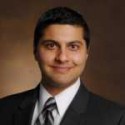Author Interviews, Columbia, NEJM, Orthopedics, Osteoporosis / 21.09.2016
Romosozumab Has Potential To Reduce New Vertebral Fractures at 12 Months
MedicalResearch.com Interview with:
Felicia Cosman, M.D.
Medical Director of the Clinical Research Center
Helen Hayes Hospital
Professor of Medicine
Columbia University College of Physician and Surgeons
New York
Editor-in-Chief, Osteoporosis International
MedicalResearch.com: What is the background for this study? What are the main findings?
Response: Amgen and UCB presented detailed data from the Phase 3 FRAME study in an oral session at ASBMR 2016, and the data were also published in the New England Journal of Medicine. Additionally, the FRAME abstract has been awarded the 2016 ASBMR Most Outstanding Clinical Abstract Award. The FRAME data show significant reductions in both new vertebral and clinical fractures in postmenopausal women with osteoporosis.
Patients receiving a monthly subcutaneous 210 mg dose of romosozumab experienced a statistically significant 73 percent reduction in the relative risk of a vertebral (spine) fracture through 12 months, the co-primary endpoint, compared to those receiving placebo (fracture incidence 0.5 percent vs. 1.8 percent, respectively [p<0.001]). By six months, new vertebral fractures occurred in 14 romosozumab and 26 placebo patients; between six to 12 months, fractures occurred in two versus 33 additional patients in each group, respectively.
Patients receiving romosozumab experienced a statistically significant 36 percent reduction in the relative risk of a clinical fracture, a secondary endpoint, through 12 months compared to those receiving placebo (fracture incidence 1.6 percent vs. 2.5 percent, respectively [p=0.008]).
In patients who received romosozumab in year one, fracture risk reduction continued through month 24 after both groups transitioned to denosumab treatment through the second year of the study: there was a statistically significant 75 percent reduction in the risk of vertebral fracture at month 24 (the other co-primary endpoint) in patients who received romosozumab followed by denosumab vs. placebo followed by denosumab (fracture incidence 0.6 percent vs. 2.5 percent, respectively [p<0.001]).
Clinical fractures encompass all symptomatic fractures (both non-vertebral and painful vertebral fractures; all clinical fractures assessed in the FRAME study were symptomatic fragility fractures. A 33 percent reduction in relative risk of clinical fracture was observed through 24 months after patients transitioned from romosozumab to denosumab compared to patients transitioning from placebo to denosumab (nominal p=0.002, adjusted p=0.096).
(more…)




